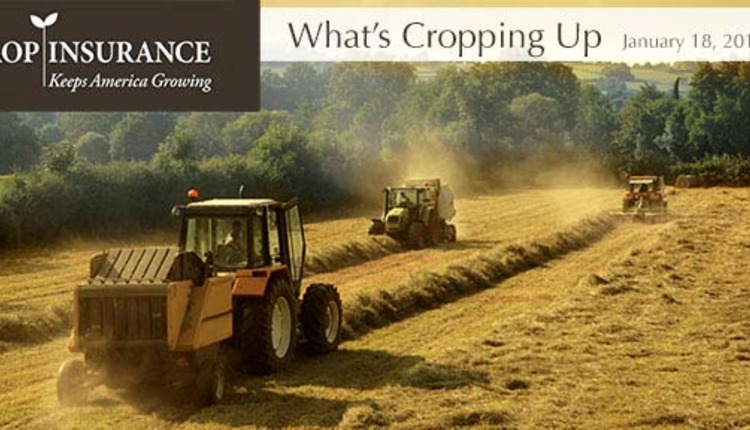Former RMA Administrator Opines on Crop Insurance Critics |
|||
|
|
|||
This item has been supplied by a forage marketer and has not been edited, verified or endorsed by Hay & Forage Grower.
Kenneth Ackerman, a former Administrator of the USDA’s Risk Management Agency, recently published an article entitled Top Priority for the 2018 Farm Bill: Protect Federal Crop Insurance.
We thought the piece summed up the current political debate surrounding crop insurance well, and wanted to share it more broadly. Ackerman, who currently works at OFW Law, embodied the term “public-private partnership” when he worked for the government, and, as you can tell, is still a champion of a strong crop insurance system. Crop insurance critics have a blind spot, seen in the recent CBO report...issued December 2017. At several points, CBO asks whether the cost to taxpayers for the current FCIC program is justified compared with the alternative, that is, simply protecting farmers against unusual disasters by providing what it calls “supplemental assistance,” or what used to be less-delicately labelled “ad hoc disaster bailouts.” CBO ultimately ducks the question. “It is not possible to know,” the report says, “nor are data available,” it argues, and “it is not possible to compare” the two. Here, they are wrong. Data does exist to compare the two approaches. All that’s required to access it is a memory. Young farmers today probably don’t remember what it was like to be dependent for survival after a natural disaster almost entirely on politicians in Congress working feverishly to produce emergency one-time-only ad hoc rescue packages. These ad hoc bills have largely gone extinct since around 2011 as FCIC crop insurance has replaced them. This accomplishment is no small thing. Even the recent House-passed special emergency bill for 2017’s devastating Hurricanes Harvey, Irma, and Maria, which does provide aid for certain crop losses, links that aid directly to crop insurance participation. But before 1994, FCIC crop insurance was a tiny program, with participation barely a fourth of modern levels and total guarantees barely a tenth. As a result, every farm disaster required an emergency ad hoc disaster bill. During the decade before 1994, these ad hoc disaster bills averaged about a billion dollars per year, peaking at $4 billion each following the monumental 1988 drought and 1993 flood. These disaster bills, in turn, discouraged farmers from buying coverage. This was the system that modern crop insurance was designed to replace. The disaster bills at the time were necessary lifelines in the absence of other support, but they were also a nightmare: for farmers, for taxpayers, and for USDA staff trying to administer it. Beyond the sheer uncertainty, a parade of reports from GAO, the Washington Post and other newspapers, and Congressional oversight committees disclosed legions of mis-payments and program abuses, not the fault of farmers or agency staff but simply the fact that USDA was required to implement these bulky, multibillion-dollar programs with little notice and inadequate infrastructure, the result of being, in fact, ad hoc. FCIC crop insurance, unlike disaster aid, is a business model that rewards farmers for being good managers and good businessmen. Claims are paid reliably in 30 days after being filed, based on stable, pre-set contracts. Farmers purchase their coverage, paying good money from their own pockets, yes at subsidized rates, but still large enough to force them to make serious choices about risk. Producers who keep good production records enjoy better guarantees, and those who incorporate crop insurance into business plans linked with credit, banking, precision agriculture, and related risk-management tools like forward contracting and futures and options, do even better. For farmers who pre-contract their crops to processors, FCIC policies are often designed to incorporate those contacts seamlessly with their coverages. No wonder that private lenders today routinely require crop insurance as a condition of extending credit, as do other rural businesses. The “reforms” that claim to “fix” crop insurance, be it through means testing, eliminating coverages like the Harvest Price Option, or similar steps, all work against the program’s basic strength, its business basis reflected in established systems for underwriting and rating.
|
